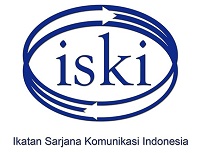Youth Lifestyle in A Moslem Magazine: A Reception Analysis on “Muslimah” Readers
Abstract
Keywords
Full Text:
PDF (Bahasa Indonesia)References
Acosta-Alzuru, Carolina & Peggy J. Kreshel. 2002. “I’m An American Girl … Whatever That Means: Girls Consuming Pleasant Company’s American Girl Identity.” Journal of Communication. March 2002/vol 52 No.1. Wahington D.C: Oxford University Press.
Al-Ghifari, Abu. 2004. Remaja Korban Mode Bandung: Mujahid Press.
——————. 2005. Kudung Gaul. Bandung: Mujahid Press.
Alif, Gunawan M. 1996. Memahami Usia Dewasa Muda (Understanding Young Adult). Cakram Magazine, May.
Barker, Chris. 2004. Cultural Studies: Theory and Practice. 2nd edition. London: Sage Publication.
Chaney, David. 1996. Lifestyles: An Introduction (an Indonesian translation). Yogyakarta: Jalasutra.
Creswell, John W. 1994. Research Design: Qualitative and Quantitative Approaches, London, Thousand Oaks, New Delhi: Sage Publications.
Croteau, David & William Hoyness. 2003. Media/Society: Industries, Image and Audiences. 3rd Edition. Thousand Oaks, CA, USA: Sage Publications.
Curran, James; David Morley and Valerie Walkerdine. 1992. Cultural Studies and Communications. London, New York, Sydney, Auckland: Arnold.
Effendy, Bachtiar. 2001. Teologi Baru Politik Islam. Yogyakarta: Galang Printika.
Jensen, Klaus Bruhn & Nicholas W. Jankowski. 2002. A Handbook of Qualitative Methodologies for Mass Communication Research. New York: Routledge.
Juliastuti, Nuraini. 2003. “Politik Pakaian Muslim”. Newsletter KUNCI number 13, Desember 2003. Accesed on 4 Januari 2006 from http://kunci.or.id. Cultural Studies Center.
Kurniawan, Junaedhi. 1995. Rahasia Dapur Majalah di Indonesia. Jakarta: Gramedia Pustaka Utama.
Louw. Eric. 2001. The Media and Cultural Production. London: Sage Publication
Malik, Abdul. 2002. Wanita Spons: Fenomena Wanita Masa Kini. Jakarta: Robbani Press.
Mu’nim, Abdul. 2000. Di Tengah Arus Transisi. Jakarta: Kompas Media Nusantara.
Patton, Michael Quinn (2002). Qualitative Research & Evaluation Methods. 3rd Edition. Thousand Oaks, CA: Sage Publications.
Rojek, Chris (2000). Leisure and Culture. London: St. Martin Press.
Rothenbuhler, Eric W; Mihai Coman (editors). 2005. Media Anthropology. London: New Delhi. Thousand Oaks: Sage Publication.
DOI: https://doi.org/10.29313/mediator.v8i1.1231
Refbacks
- There are currently no refbacks.

This work is licensed under a Creative Commons Attribution 4.0 International License























